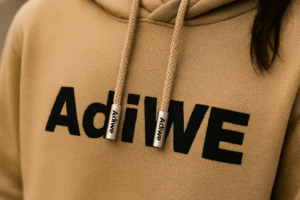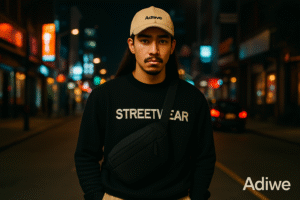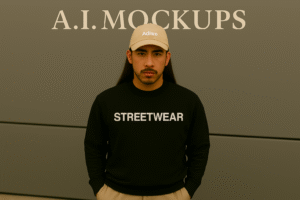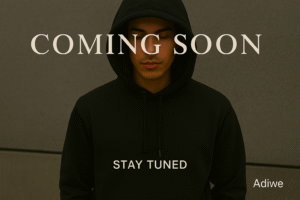Struggling with fresh embroidery concepts for your streetwear? Generic designs can make your brand invisible. Let's uncover unique ideas that make your apparel pop and truly stand out.
Top embroidery ideas for streetwear include bold brand logos, intricate full-back pieces, subtle sleeve or cuff details, cultural motifs, minimalist line art, and mixed-media applications combining embroidery with print. These can elevate brand identity and perceived value significantly, making your pieces highly desirable.
Picking the right embroidery is a big step for any streetwear brand. It's about more than just decoration; it's about making a statement. But what actually sells best, and what's currently hot in the market? As the owner of Adiwe, a factory specializing in custom streetwear, I've seen countless designs pass through our five production lines. We work with all sorts of clients, from up-and-coming KOLs to established trend brands across North America and Europe. Let's dive into what moves the needle and what can make your collection a hit.
What Sells Most in Embroidery?
Wondering which embroidery designs fly off the shelves for streetwear? Investing in unpopular styles wastes precious resources and time. Let's identify the consistently best-selling embroidery applications.
Brand logos, minimalist text, and well-placed small icons are consistent top sellers in embroidery. For streetwear, unique back graphics on hoodies or jackets and distinct sleeve details also have very strong commercial appeal, adding significant value.
!
In my experience at Adiwe, certain embroidery types have proven to be perennial favorites, especially for the streetwear market. These are the designs that brands, including my client Fifty Fifty from England, often gravitate towards because they resonate with their target audience and enhance the garment's appeal.
-
The Unbeatable Power of Branding in Embroidery
Logos are, without a doubt, king when it comes to best-selling embroidery. A well-embroidered logo instantly communicates brand identity and quality. For streetwear, brand recognition is huge. Young consumers often connect with a brand's ethos, and the logo is the most direct symbol of that. Placement is also key. A crisp logo on the left chest of a t-shirt or hoodie is classic. We also see many requests for logos on sleeves or subtly at the back neck. Fifty Fifty, for instance, puts a lot of emphasis on their logo for their hoodies. They know their 28-year-old confident buyer, who is also the company owner, wants products that clearly represent their brand's focus on design and quality. The embroidery must be sharp and durable.
-
Simplicity Sells: The Appeal of Minimalist Designs
While bold logos are popular, there's also a strong market for minimalist embroidery. This can be a short, meaningful phrase, a simple line-art icon, or even just the brand name in a clean font. These designs appeal because of their subtlety and versatility. Not everyone wants a huge graphic. Sometimes, a small, well-executed embroidered detail can speak volumes. This approach often attracts brands looking for a more timeless or understated aesthetic that can be worn in many different situations. It’s less about shouting and more about a quiet confidence in the design.
-
Making a Statement: Large and Intricate Graphics
On the other end of the spectrum, large statement pieces, especially full-back embroidery on jackets or hoodies, sell very well for brands aiming for high impact. This is where complex artwork can truly shine. However, these designs require a high level of skill in both digitizing the artwork for embroidery and operating the machinery. This is a common pain point for brands like Fifty Fifty; they've told me that many manufacturers struggle to fully reproduce their more complex designs which often involve intricate craftsmanship. At Adiwe, our investment in advanced machinery and skilled technicians means we can handle these challenging projects, delivering the top quality our clients expect for their trendy pieces.
| Placement | Common Use | Impact | Why It Sells |
|---|---|---|---|
| Left/Right Chest | Logos, small icons | Classic, good for brand visibility | Instant brand recognition, subtle yet effective |
| Full Front/Back | Large graphics, art | High impact, statement piece | Turns clothing into wearable art, very trendy |
| Sleeves | Text, logos, stripes | Trendy, adds unique detail | Offers an unexpected point of interest |
| Hood | Small logos, text | Subtle branding, cool detail when hood is down | Acknowledges the garment's 3D form |
| Cuffs/Collars | Initials, tiny symbols | Premium touch, very subtle detailing | Suggests higher quality and attention to detail |
Which Embroidery Is Trending Now?
Want your streetwear to feel current and exciting for your customers? Using outdated embroidery techniques can unfortunately make your brand look old. Let's explore the hottest embroidery trends capturing attention right now.
Current embroidery trends include 3D puff embroidery for texture, classic chenille patches for a vintage vibe, mixed media (embroidery with print), textured stitches beyond the basic, and minimalist line art. Vintage-inspired chain stitch is also making a strong comeback in streetwear.
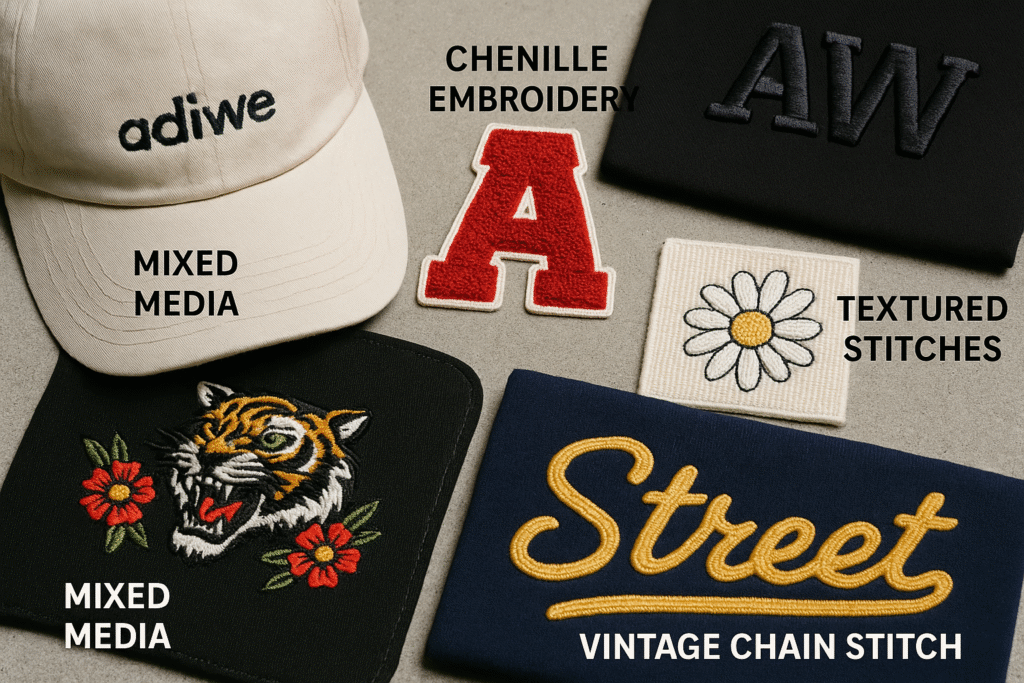
The world of fashion, especially streetwear, is always evolving. As a manufacturer for brands in North America, England, and France, I see trends emerge and take hold. Staying on top of these can give your collection a real edge. At Adiwe, we make it our business to offer these trendy techniques with top quality.
-
Adding Dimension: 3D Puff and Chenille Are Big
One of the most popular trends I'm seeing is embroidery that adds physical texture. 3D Puff embroidery is huge. This technique uses a foam base under the embroidery to make the design literally stand up from the fabric. It's fantastic for bold lettering, logos, or graphic elements on hoodies and caps. It creates a very tactile and visually striking effect. Then there's Chenille. Think of those soft, fuzzy, towel-like patches, often seen on varsity jackets. Chenille is making a massive comeback in streetwear, used for large letters, mascots, or graphic patches. It adds a retro, nostalgic feel that many younger consumers love. We recently completed an order for a UK-based brand, similar to Fifty Fifty, that used chenille appliques on heavyweight hoodies, and the result was fantastic – really high perceived value.
-
Mixed Media Magic: Combining Embroidery with Print
Another exciting trend is mixed media, where embroidery is combined with other decoration techniques like screen printing or Direct-to-Garment (DTG) printing. For example, a brand might have a large graphic printed on a t-shirt, with certain elements or outlines highlighted with embroidery. This adds incredible depth, texture, and a premium feel to the garment. It allows for really creative expressions. I remember a K.O.L. client from North America who wanted to launch a limited-edition t-shirt line. We combined a soft-hand print with delicate embroidered details tracing parts of the artwork. The final product looked very artistic and sold out quickly. This technique requires careful registration and understanding of how both processes interact, which is a specialty we offer at Adiwe.
-
The Beauty of Texture, Line Art, and Vintage Stitches
Beyond puff and chenille, there's a growing appreciation for more diverse stitch types and subtle textures. Instead of just standard satin stitch, brands are exploring fill stitches with unique patterns, or the classic chain stitch, which has a very distinct, handcrafted look. Chain stitch is especially popular for script lettering or outlines, giving a vintage feel. Minimalist line art is also very trendy. Simple, elegant, single-line drawings or abstract shapes translate beautifully into embroidery, offering a modern and sophisticated aesthetic. We often advise clients on how different stitch types can achieve different artistic effects. For instance, a simple line art design can look incredibly chic when embroidered with a slightly thicker thread on a quality cotton t-shirt.
Is a Custom Embroidery Business Profitable?
Considering adding custom embroidery to your services or perhaps starting such a business from scratch? Doubts about profitability can often hold you back from making that leap. Let's analyze the financial viability.
Yes, a custom embroidery business can be very profitable. Embroidery adds significant perceived value to garments, allowing for higher price points compared to basic items. Key factors for success include quality of work, appealing designs, and efficient production processes.
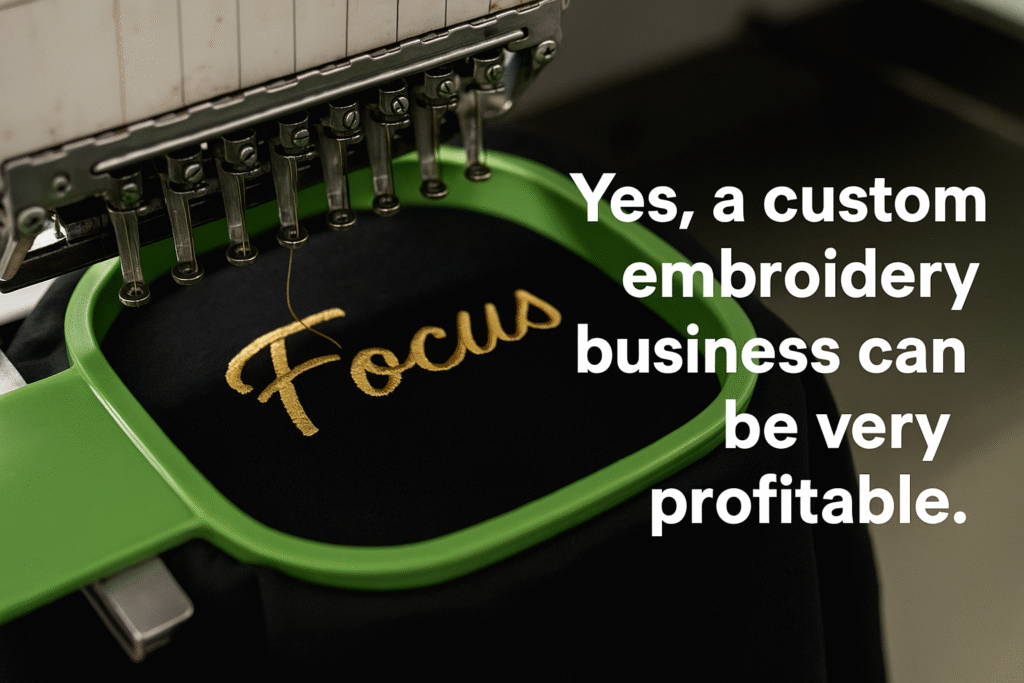
From my perspective as a factory owner with five production lines, specializing in B2B wholesale for streetwear brands, embroidery is a cornerstone of our value proposition. Many clients, like Fifty Fifty from England, specifically seek out high-quality embroidery because it aligns with their brand's focus on design and top quality.
-
The Strong Value Proposition of Embroidery
Embroidery inherently signals a higher level of quality and customization compared to, say, a simple print. When a customer sees an embroidered garment, they often perceive it as more durable, more detailed, and more premium. This allows brands to command a higher retail price. For example, a hoodie with a complex, well-executed embroidery design can sell for significantly more than a plain one. This added value is something that brands like Fifty Fifty leverage. They know their young, trend-conscious customers are willing to pay for products that look and feel superior, and embroidery helps achieve that. Their main sourcing locations are developing countries like China for this reason – to get that craftsmanship at a competitive price point.
-
Understanding Cost Factors and Profit Margins
Of course, there are costs involved. For a factory like Adiwe, the initial investment in advanced multi-head embroidery machines and digitizing software is substantial. Then there are the ongoing costs of high-quality threads, stabilizers, needles, and skilled labor for digitizing artwork and operating the machines. However, the markup on embroidered goods can be quite healthy, especially for B2B clients who order in volume. Efficient production, minimizing thread breaks, and optimizing designs for embroidery all contribute to better margins. We focus on top quality materials and craftsmanship because rework is expensive and damages reputation.
-
Finding Your Niche and Clientele for Profitability
The profitability of an embroidery business also depends on finding the right niche and clientele. Streetwear brands are a prime market, as they heavily rely on graphics and branding. This is our main focus at Adiwe, exporting to North America, England, and France. Other profitable niches include corporate apparel, team uniforms, and personalized gifts. For a B2B model like ours, attracting clients like trend brands and established clothing lines is key. They find us through channels like Alibaba, international exhibitions, and Google searches. They are often looking for a factory that can handle personalized designs, customizable fabrics, and complex craftsmanship – exactly what we provide. The ability to solve their pain points, such as reproducing intricate designs that other manufacturers struggle with, makes us a valuable partner.
| Factor | Impact on Profitability | Adiwe's Approach to Maximize Client Value |
|---|---|---|
| Design Complexity | Higher stitch counts = more time/cost, but can sell for more | We handle very complex designs; quoting is transparent |
| Order Volume | Larger orders typically reduce the per-unit production cost | Our B2B wholesale model is built for volume efficiency |
| Machine Efficiency | Modern, faster machines & less downtime mean lower costs | We invest in 5 lines of top-quality, maintained equipment |
| Material Quality | Good threads/backing prevent issues, ensure garment longevity | We insist on top-quality materials for durability |
| Skill of Staff | Reduces errors, optimizes production, ensures quality output | Our team is trained, with rigorous quality control |
| Market Demand | Strong for custom, personalized, and uniquely branded apparel | Streetwear is a high-demand segment for unique embroidery |
Conclusion
Embroidery offers vast creative and commercial potential for streetwear. Choose your ideas wisely, stay current with trends, and partner with quality-focused manufacturers for the best, most profitable results.

